2017-06-22 - Nº 112
Editorial
Esta é a Newsletter Nº 112 que se apresenta com o mesmo formato que as anteriores. Se gostar da Newsletter partilhe-a!
Todas as Newsletters encontram-se indexadas no link.
Esta Newsletter tem os seguintes tópicos:
Faz hoje anos que nascia, em 1910, Konrad Zuse. Este engenheiro alemão foi responsável pela criação do primeiro computador programável do mundo; O Z3, ficou operacional em maio de 1941. Graças a essa máquina e aos seus antecessores, Zuse é considerado como o inventor do computador moderno. Faz também anos hoje Hermann Minkowski. Este matemático alemão, nascido em 1864 ficou conhecido por ter criado e desenvolvido a geometria dos números e usou métodos geométricos para resolver problemas na teoria dos números, na física matemática e na teoria da relatividade. Minkowski é talvez mais conhecido pelo seu trabalho na relatividade, no qual ele mostrou em 1907 que a teoria da relatividade especial do seu antigo estudante, Albert Einstein (1905), poderia ser entendida geometricamente como uma teoria do espaço-tempo em quatro dimensões, conhecida como a "Espaço-tempo Minkowski". Faz também anos hoje que nascia nos Estados Unidos, em 1899, Richard Gurley Drew. Este inventor ficou conhecido por ter inventado a fita de pintor e o papel celofane quando trabalhava na 3M. Faz igualmente anos hoje que nascia James H. Pomerene. Este engenheiro electrotécnico Norte-Americano foi responsável, conjuntamente com os engenheiros Bruce Gilchrist e Y.K. Wong, da invenção de um somador rápido, que incorporou uma técnica de aceleração para adições assíncronas, reduzindo o tempo de propagação do transporte. Este projeto foi, na verdade, posteriormente incorporado num computador comercial, o Philco TRANSAC S-2000, introduzido em 1957, o primeiro computador transistorizado comercial. Por fim, faz anos que nascia, em 1792, James Beaumont Neilson. Este inventor escocês desenvolveu um processo de sopro a quente que melhorou a eficiência do processo de fundição do ferro. As experiências por ele realizadas demonstraram que a uma temperatura de 600 °F reduziu o consumo para um terço comparado com o sopro a frio e permitiu que o carvão fosse usado em vez de coque, com uma economia de custo adicional.
Nas noticias da semana, um estudo apresentado demonstra que as estrelas nascem aos pares. De acordo com uma nova análise feita por um físico teórico da Universidade de Berkeley na Califórnia, e um rádio astrónomo do Smithsonian Astrophysical Observatory na Universidade de Harvard. Muitas estrelas têm companheiros, incluindo o nosso vizinho mais próximo, Alpha Centauri, um sistema triplo. A equipa que opera o telescópio espacial da Kepler da NASA lançou um catálogo de missão de candidatos de planeta que apresenta 219 novos candidatos de planeta, 10 dos quais são quase do tamanho da Terra e orbitam na zona habitável da sua estrela, que é a distância de uma estrela onde a água líquida poderia existir na superfície de um planeta rochoso. Finalmente e após 26 meses de desenvolvimento foi lançado esta semana o Debian 9.0 Stretch. Que será suportado nos próximos 5 anos, graças ao trabalho combinado da equipe Debian Security e da equipa Debian Long Term Support Team. O Debian 9 é dedicado ao fundador do projecto, Ian Murdock, que faleceu em 28 de dezembro de 2015. Esta semana também é noticia a Autoeuropa por fazer uso da tecnologia de impressão 3D. O caso da Autoeuropa ilustra como a impressão em 3D pode ser de grande valor para a indústria automóvel. Enquanto - tradicionalmente - a impressão em 3D costumava ser associada à criação de protótipos, possui um grande potencial para a fabricação de empresas na criação de ferramentas, jigs, dispositivos eléctricos e outras ferramentas de fabricação personalizadas. Com a impressão em 3D, é possível criar projectos altamente complexos e fazer revisões e correcções rápidas, sem penalidades de custos ou longos prazos de entrega. As ferramentas podem ser adaptadas para corresponder aos requisitos exactos, tornando a função e o desempenho os principais drivers do design e não custo ou o tempo.
Na Newsletter desta semana apresentamos diversos projectos de maker assim como alguns modelos 3D que poderão ser úteis.
 João Alves ([email protected])
João Alves ([email protected])
O conteúdo da Newsletter encontra-se sob a licença  Creative Commons Attribution-NonCommercial-ShareAlike 4.0 International License.
Creative Commons Attribution-NonCommercial-ShareAlike 4.0 International License.
Novidades da Semana
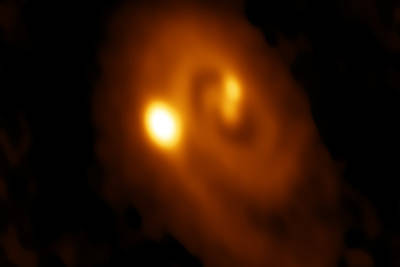
New Evidence That All Stars Are Born in Pairs
"Did our Sun have a twin when it was born 4.5 billion years ago? Almost certainly yes -- though not an identical twin. And so did every other Sun-like star in the universe, according to a new analysis by a theoretical physicist from the University of California, Berkeley, and a radio astronomer from the Smithsonian Astrophysical Observatory at Harvard University. Many stars have companions, including our nearest neighbor, Alpha Centauri, a triplet system. Astronomers have long sought an explanation. Are binary and triplet star systems born that way? Did one star capture another? Do binary stars sometimes split up and become single stars? Astronomers have even searched for a companion to our Sun, a star dubbed Nemesis because it was supposed to have kicked an asteroid into Earth’s orbit that collided with our planet and exterminated the dinosaurs. It has never been found. The new assertion is based on a radio survey of a giant molecular cloud filled with recently formed stars in the constellation Perseus, and a mathematical model that can explain the Perseus observations only if all Sun-like stars are born with a companion. "We are saying, yes, there probably was a Nemesis, a long time ago," said co-author Steven Stahler, a UC Berkeley research astronomer. "We ran a series of statistical models to see if we could account for the relative populations of young single stars and binaries of all separations in the Perseus molecular cloud, and the only model that could reproduce the data was one in which all stars form initially as wide binaries. These systems then either shrink or break apart within a million years." In this study, "wide" means that the two stars are separated by more than 500 astronomical units, or AU, where one astronomical unit is the average distance between the Sun and Earth (93 million miles). A wide binary companion to our Sun would have been 17 times farther from the Sun than its most distant planet today, Neptune. Based on this model, the Sun's sibling most likely escaped and mixed with all the other stars in our region of the Milky Way galaxy, never to be seen again. "The idea that many stars form with a companion has been suggested before, but the question is: how many?" said first author Sarah Sadavoy, a NASA Hubble fellow at the Smithsonian Astrophysical Observatory. "Based on our simple model, we say that nearly all stars form with a companion. The Perseus cloud is generally considered a typical low-mass star-forming region, but our model needs to be checked in other clouds." The idea that all stars are born in a litter has implications beyond star formation, including the very origins of galaxies, Stahler said. Stahler and Sadavoy posted their findings in April on the arXiv and is available online. Their paper has been accepted for publication in the Monthly Notices of the Royal Astronomical Society." [...]

NASA Releases Kepler Survey Catalog with Hundreds of New Planet Candidates
"NASA’s Kepler space telescope team has released a mission catalog of planet candidates that introduces 219 new planet candidates, 10 of which are near-Earth size and orbiting in their star's habitable zone, which is the range of distance from a star where liquid water could pool on the surface of a rocky planet. This is the most comprehensive and detailed catalog release of candidate exoplanets, which are planets outside our solar system, from Kepler’s first four years of data. It’s also the final catalog from the spacecraft’s view of the patch of sky in the Cygnus constellation. With the release of this catalog, derived from data publicly available on the NASA Exoplanet Archive, there are now 4,034 planet candidates identified by Kepler. Of which, 2,335 have been verified as exoplanets. Of roughly 50 near-Earth size habitable zone candidates detected by Kepler, more than 30 have been verified. Additionally, results using Kepler data suggest two distinct size groupings of small planets. Both results have significant implications for the search for life. The final Kepler catalog will serve as the foundation for more study to determine the prevalence and demographics of planets in the galaxy, while the discovery of the two distinct planetary populations shows that about half the planets we know of in the galaxy either have no surface, or lie beneath a deep, crushing atmosphere – an environment unlikely to host life. The findings were presented at a news conference Monday at NASA's Ames Research Center in California's Silicon Valley." [...]

Debian 9.0 Stretch has been released!
"After 26 months of development the Debian project is proud to present its new stable version 9 (code name Stretch), which will be supported for the next 5 years thanks to the combined work of the Debian Security team and of the Debian Long Term Support team. Debian 9 is dedicated to the project's founder Ian Murdock, who passed away on 28 December 2015. In Stretch, the default MySQL variant is now MariaDB. The replacement of packages for MySQL 5.5 or 5.6 by the MariaDB 10.1 variant will happen automatically upon upgrade. Firefox and Thunderbird return to Debian with the release of Stretch, and replace their debranded versions Iceweasel and Icedove, which were present in the archive for more than 10 years. Thanks to the Reproducible Builds project, over 90% of the source packages included in Debian 9 will build bit-for-bit identical binary packages. This is an important verification feature which protects users from malicious attempts to tamper with compilers and build networks. Future Debian releases will include tools and metadata so that end-users can validate the provenance of packages within the archive. Administrators and those in security-sensitive environments can be comforted in the knowledge that the X display system no longer requires root privileges to run. The Stretch release is the first version of Debian to feature the modern branch of GnuPG in the gnupg package. This brings with it elliptic curve cryptography, better defaults, a more modular architecture, and improved smartcard support. We will continue to supply the classic branch of GnuPG as gnupg1 for people who need it, but it is now deprecated." [...]
Outras Notícias
- Intel discontinues Joule, Galileo, and Edison product lines
- Spanish scientists make advances in 3D printing bone and cartilage tissue
- Researchers developing a new balance for the new kilogram
- LENOVO Delivers the World's Largest Next-Generation Intel-based Supercomputer at Barcelona Supercomputing Center
- Volkswagen Autoeuropa: Maximizing production efficiency with 3D printed tools, jigs, and fixtures
- AMD EPYC™ Datacenter Processor Launches with Record-Setting Performance, Optimized Platforms, and Global Server Ecosystem Support
- mbed OS 5.5 is now released!
- ROHM AND A*STAR'S IME to develop artificial intelligence Chip for predictive maintenance in smart factories
- Latest PIC32 Family Increases Performance While Reducing Power Consumption
- Samsung Begins Mass Production of First Exynos-branded IoT Solution, the Exynos i T200
- Laser-targeting A.I. Yields More Mars Science
Ciência e Tecnologia
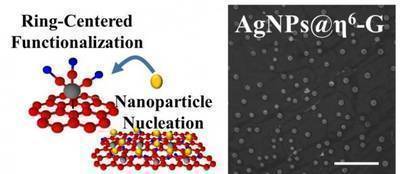
New chemical method could revolutionize graphene
"University of Illinois at Chicago scientists have discovered a new chemical method that enables graphene to be incorporated into a wide range of applications while maintaining its ultra-fast electronics. Graphene, a lightweight, thin, flexible material, can be used to enhance the strength and speed of computer display screens, electric/photonics circuits, solar cells and various medical, chemical and industrial processes, among other things. It is comprised of a single layer of carbon atoms bonded together in a repeating pattern of hexagons. Isolated for the first time 15 years ago by a physics professor at the University of Manchester in England, it is so thin that it is considered two-dimensional and thought to be the strongest material on the planet. Vikas Berry, associate professor and department head of chemical engineering, and colleagues used a chemical process to attach nanomaterials on graphene without changing the properties and the arrangement of the carbon atoms in graphene. By doing so, the UIC scientists retained graphene’s electron-mobility, which is essential in high-speed electronics. The addition of the plasmonic silver nanoparticles to graphene also increased the material’s ability to boost the efficiency of graphene-based solar cells by 11 fold, Berry said. The research, funded by the National Science Foundation (CMMI-1030963), has been published in the journal Nano Letters." [...]
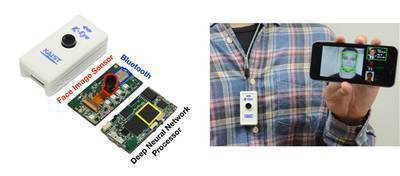
Face Recognition System “K-Eye” Presented by KAIST
"Artificial intelligence (AI) is one of the key emerging technologies. Global IT companies are competitively launching the newest technologies and competition is heating up more than ever. However, most AI technologies focus on software and their operating speeds are low, making them a poor fit for mobile devices. Therefore, many big companies are investing to develop semiconductor chips for running AI programs with low power requirements but at high speeds. A research team led by Professor Hoi-Jun Yoo of the Department of Electrical Engineering has developed a semiconductor chip, CNNP (CNN Processor), that runs AI algorithms with ultra-low power, and K-Eye, a face recognition system using CNNP. The system was made in collaboration with a start-up company, UX Factory Co. The K-Eye series consists of two types: a wearable type and a dongle type. The wearable type device can be used with a smartphone via Bluetooth, and it can operate for more than 24 hours with its internal battery. Users hanging K-Eye around their necks can conveniently check information about people by using their smartphone or smart watch, which connects K-Eye and allows users to access a database via their smart devices. A smartphone with K-EyeQ, the dongle type device, can recognize and share information about users at any time. When recognizing that an authorized user is looking at its screen, the smartphone automatically turns on without a passcode, fingerprint, or iris authentication. Since it can distinguish whether an input face is coming from a saved photograph versus a real person, the smartphone cannot be tricked by the user’s photograph. The K-Eye series carries other distinct features. It can detect a face at first and then recognize it, and it is possible to maintain “Always-on” status with low power consumption of less than 1mW. To accomplish this, the research team proposed two key technologies: an image sensor with “Always-on” face detection and the CNNP face recognition chip. The first key technology, the “Always-on” image sensor, can determine if there is a face in its camera range. Then, it can capture frames and set the device to operate only when a face exists, reducing the standby power significantly. The face detection sensor combines analog and digital processing to reduce power consumption. With this approach, the analog processor, combined with the CMOS Image Sensor array, distinguishes the background area from the area likely to include a face, and the digital processor then detects the face only in the selected area. Hence, it becomes effective in terms of frame capture, face detection processing, and memory usage. The second key technology, CNNP, achieved incredibly low power consumption by optimizing a convolutional neural network (CNN) in the areas of circuitry, architecture, and algorithms. First, the on-chip memory integrated in CNNP is specially designed to enable data to be read in a vertical direction as well as in a horizontal direction. Second, it has immense computational power with 1024 multipliers and accumulators operating in parallel and is capable of directly transferring the temporal results to each other without accessing to the external memory or on-chip communication network. Third, convolution calculations with a two-dimensional filter in the CNN algorithm are approximated into two sequential calculations of one-dimensional filters to achieve higher speeds and lower power consumption." [...]

Russian Researchers Developed a Reliable Forward Error Correction Method for Digital Data
"Scientists of Peter the Great St.Petersburg Polytechnic University (SPbPU) proposed a new channel coding method for the fifth generation of wireless systems (5G). Channel coding theory studies techniques for introducing redundancy into information, to protect it from errors that occur during transmission or storage. For example, human speech has some redundancy, so that not every combination of sounds or letters is a permissible word. This enables people to communicate even in a noisy environment. Storage and information transmission systems are integral parts of gadgets, smartphones and computers. Their developers must implement simple and reliable methods to protect data from corruption. Currently, many universities in the world are working on improving polar codes. This is the method of noise-immune coding developed by Turkish scientist Erdal Arikan. Significant progress in this area was achieved by SPbPU." [...]

China Shatters “Spooky Action at a Distance” Record, Preps for Quantum Internet
"In a landmark study, a team of Chinese scientists using an experimental satellite has tested quantum entanglement over unprecedented distances, beaming entangled pairs of photons to three ground stations across China—each separated by more than 1,200 kilometers. The test verifies a mysterious and long-held tenet of quantum theory, and firmly establishes China as the front-runner in a burgeoning “quantum space race” to create a secure, quantum-based global communications network—that is, a potentially unhackable “quantum internet” that would be of immense geopolitical importance. The findings were published Thursday in Science. “China has taken the leadership in quantum communication,” says Nicolas Gisin, a physicist at the University of Geneva who was not involved in the study. “This demonstrates that global quantum communication is possible and will be achieved in the near future.” The concept of quantum communications is considered the gold standard for security, in part because any compromising surveillance leaves its imprint on the transmission. Conventional encrypted messages require secret keys to decrypt, but those keys are vulnerable to eavesdropping as they are sent out into the ether. In quantum communications, however, these keys can be encoded in various quantum states of entangled photons—such as their polarization—and these states will be unavoidably altered if a message is intercepted by eavesdroppers. Ground-based quantum communications typically send entangled photon pairs via fiber-optic cables or open air. But collisions with ordinary atoms along the way disrupt the photons’ delicate quantum states, limiting transmission distances to a few hundred kilometers. Sophisticated devices called “quantum repeaters”—equipped with “quantum memory” modules—could in principle be daisy-chained together to receive, store and retransmit the quantum keys across longer distances, but this task is so complex and difficult that such systems remain largely theoretical." [...]
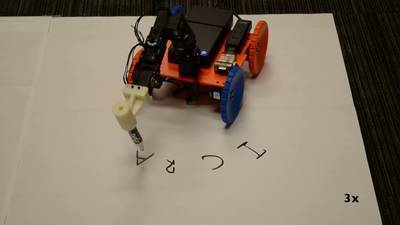
DIY Robot Design
"A new interactive design tool developed by Carnegie Mellon University's Robotics Institute enables both novices and experts to build customized legged or wheeled robots using 3-D-printed components and off-the-shelf actuators. Using a familiar drag-and-drop interface, individuals can choose from a library of components and place them into the design. The tool suggests components that are compatible with each other, offers potential placements of actuators and can automatically generate structural components to connect those actuators. Once the design is complete, the tool provides a physical simulation environment to test the robot before fabricating it, enabling users to iteratively adjust the design to achieve a desired look or motion. "The process of creating new robotic systems today is notoriously challenging, time-consuming and resource-intensive," said Stelian Coros, assistant professor of robotics. "In the not-so-distant future, however, robots will be part of the fabric of daily life and more people - not just roboticists — will want to customize robots. This type of interactive design tool would make this possible for just about anybody." Robotics Ph.D. student Ruta Desai presented a report on the design tool she developed with Coros and master's degree student Ye Yuan on May 30 at the IEEE International Conference on Robotics and Automation in Singapore. Coros' team designed a number of robots with the tool and verified its feasibility by fabricating two - a wheeled robot with a manipulator arm that can hold a pen for drawing, and a four-legged "puppy" robot that can walk forward or sideways." [...]
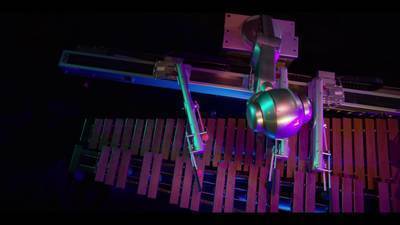
Robot Uses Deep Learning and Big Data to Write and Play its Own Music
"A marimba-playing robot with four arms and eight sticks is writing and playing its own compositions in a lab at the Georgia Institute of Technology. The pieces are generated using artificial intelligence and deep learning. Researchers fed the robot nearly 5,000 complete songs — from Beethoven to the Beatles to Lady Gaga to Miles Davis — and more than 2 million motifs, riffs and licks of music. Aside from giving the machine a seed, or the first four measures to use as a starting point, no humans are involved in either the composition or the performance of the music. The first two compositions are roughly 30 seconds in length. The robot, named Shimon, can be seen and heard playing them here and here. Ph.D. student Mason Bretan is the man behind the machine. He’s worked with Shimon for seven years, enabling it to “listen” to music played by humans and improvise over pre-composed chord progressions. Now Shimon is a solo composer for the first time, generating the melody and harmonic structure on its own." [...]
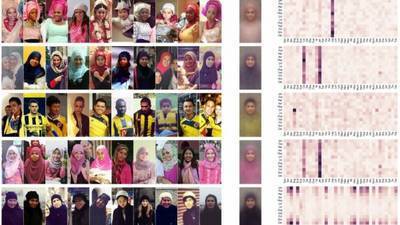
Data-Mining 100 Million Instagram Photos Reveals Global Clothing Patterns
"The millions of photos uploaded to social media are a massive untapped resource for studying humanity. But machine learning is beginning to tap this mother lode. “Imagine a future anthropologist with access to trillions of photos of people—taken over centuries and across the world—and equipped with effective tools for analyzing these photos to derive insights. What kinds of new questions can be answered?” This is the dream that has inspired Kevin Matzen, Kavita Bala, and Noah Snavely at Cornell University in Ithaca, New York. Their thinking is that the millions of photos uploaded each day to social media provide a fascinating window into the cultural, social, and economic factors that shape societies around the world. With powerful enough machine intelligence, they say, it ought to be possible to mine this mother lode of data for deep insights into our civilization. As luck would have it, this kind of machine intelligence is currently emerging at breakneck speed. And Matzen and co have put it to work studying 100 million photos posted on Instagram. The question these guys specifically want to answer was how clothing styles vary around the world, a cultural phenomenon that is otherwise difficult to study on this scale. For example, their approach can tackle questions such as how the frequency of scarf use in the U.S. is changing over time, what styles are most specific to particular regions or cities, and, conversely, which styles are popular across the world. To find out, Matzen and co turned to Instagram, which allowed them to download images within five kilometers of a specific location and within five days of a specific date. The team then identified 44 cities to study and downloaded a total of 100 million images from these locations in five-day windows between June 2013 and June 2016." [...]
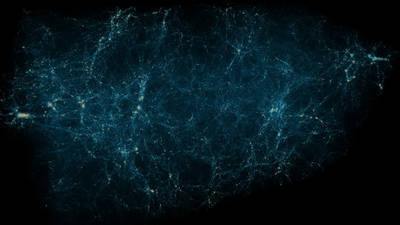
How to build software for a computer 50 times faster than anything in the world
"Imagine you were able to solve a problem 50 times faster than you can now. With this ability, you have the potential to come up with answers to even the most complex problems faster than ever before. Researchers behind the U.S. Department of Energy’s (DOE) Exascale Computing Project want to make this capability a reality, and are doing so by creating tools and technologies for exascale supercomputers – computing systems at least 50 times faster than those used today. These tools will advance researchers’ ability to analyze and visualize complex phenomena such as cancer and nuclear reactors, which will accelerate scientific discovery and innovation. “These software environments have to be robust and flexible enough to handle a broad spectrum of applications, and be well integrated with hardware and application software so that applications can run and operate seamlessly.” Developing layers of software that support and connect hardware and applications is critical to making these next-generation systems a reality. “These software environments have to be robust and flexible enough to handle a broad spectrum of applications, and be well integrated with hardware and application software so that applications can run and operate seamlessly,” said Rajeev Thakur, a computer scientist at the DOE’s Argonne National Laboratory and the director of software technology for the Exascale Computing Project (ECP). Researchers in Argonne’s Mathematics and Computer Science Division are collaborating with colleagues from five other core ECP DOE national laboratories – Lawrence Berkeley, Lawrence Livermore, Sandia, Oak Ridge and Los Alamos – in addition to other labs and universities. Their goal is to create new and adapt existing software technologies to operate at exascale by overcoming challenges found in several key areas, such as memory, power and computational resources." [...]
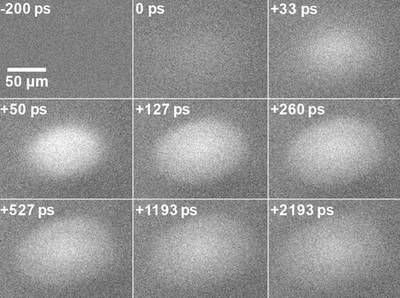
"Hot" Electrons Move Faster Than Expected
"For the first time, engineers and scientists at Caltech have been able to directly observe the ultrafast motion of electrons immediately after they are excited with a laser—and found that these electrons diffuse into their surroundings much faster and farther than previously expected. This behavior, known as "super-diffusion," had been hypothesized but never before seen. A team led by Caltech's Marco Bernardi and the late Ahmed Zewail documented the electrons' motion using microscopes that captured images with a shutter speed of a trillionth of a second at a nanometer-scale spatial resolution. Their findings appear in a study published in Nature Communications on May 11. The excited electrons exhibited a diffusion rate 1,000 times higher than before excitation. Although the phenomenon only lasts for a few hundred trillionths of a second, it provides the potential for the manipulation of hot electrons in this fast regime to transport energy and charge in novel devices. "Our work shows the existence of a fast transient that lasts for a few hundred picoseconds, during which electrons move much faster than their room-temperature speed, implying that they can cover longer distances in a given time when manipulated with lasers," says Bernardi, assistant professor of applied physics and materials science in Caltech's Division of Engineering and Applied Science. "This non-equilibrium behavior could be employed in novel electronic, optoelectronic, and renewable energy devices, as well as to uncover new fundamental physics." Bernardi's colleague, Nobel Laureate Ahmed Zewail, the Linus Pauling Professor of Chemistry, professor of physics, and director of the Physical Biology Center for Ultrafast Science and Technology at Caltech, passed away on August 2, 2016. The research was made possible by scanning ultrafast electron microscopy—an ultrafast imaging technology pioneered by Zewail that is capable of creating images with picosecond time and nanometer spatial resolutions. Bernardi developed the theory and computer models that explain the experimental results as a manifestation of super-diffusion." [...]

Space junk: The cluttered frontier
"Hundreds of millions of pieces of space junk orbit the Earth daily, from chips of old rocket paint, to shards of solar panels, and entire dead satellites. This cloud of high-tech detritus whirls around the planet at about 17,500 miles per hour. At these speeds, even trash as small as a pebble can torpedo a passing spacecraft. NASA and the U.S. Department of Defense are using ground-based telescopes and laser radars (ladars) to track more than 17,000 orbital debris objects to help prevent collisions with operating missions. Such ladars shine high-powered lasers at target objects, measuring the time it takes for the laser pulse to return to Earth, to pinpoint debris in the sky. Now aerospace engineers from MIT have developed a laser sensing technique that can decipher not only where but what kind of space junk may be passing overhead. For example, the technique, called laser polarimetry, may be used to discern whether a piece of debris is bare metal or covered with paint. The difference, the engineers say, could help determine an object’s mass, momentum, and potential for destruction. “In space, things just tend to break up over time, and there have been two major collisions over the last 10 years that have caused pretty significant spikes in debris,” says Michael Pasqual, a former graduate student in MIT’s Department of Aeronautics and Astronautics. “If you can figure out what a piece of debris is made of, you can know how heavy it is and how quickly it could deorbit over time or hit something else.” Kerri Cahoy, the Rockwell International Career Development Associate Professor of aeronautics and astronautics at MIT, says the technique can easily be implemented on existing groundbased systems that currently monitor orbital debris." [...]
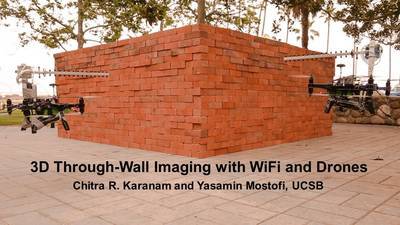
3D Through-Wall Imaging With Unmanned Aerial Vehicles and WiFi
"WiFi signals are everywhere these days. Unmanned aerial vehicles are expected to become a part of our near-future society. In this paper, we are interested in the possibilities created at this intersection of robotics and communication. More specifically, we propose a new methodology that enables the first demonstration of high-resolution 3D through-wall imaging of completely unknown areas, using only WiFi signals and unmanned aerial vehicles. Some of the key features of our approach are as follows: 1) only WiFi RSSI measurements are used, 2) no prior measurements need to be made in the area of interest, and 3) the objects do not have to move to be imaged. Here, we briefly summarize our proposed approach and show sample experiments results. See the paper and video for more details." [...]

Organic crystals behave like steel
"Scientists, including researchers from DESY, have been fascinated by thermosalient crystals for some time: when placed on a hotplate, these inconspicuous crystals suddenly propel themselves upwards, leaping to heights several times their own length. This abrupt movement is caused by a change in the structure of the crystals. A detailed examination of this transition is very difficult because it is so rapid. Now, scientists have resorted to a new technique and discovered that immediately before altering their structure the crystals emit a sound wave, the analysis of which reveals further details about this exciting phase transition. On top of this, the researchers studied the change in the crystal structure very carefully at DESY. The international team of research scientists, headed by Panče Naumov from the New York University Abu Dhabi of the United Arab Emirates, have reported their findings in the journal Angewandte Chemie International Edition. Like all crystals, thermosalient crystals are made up of a regular array of molecules. When the crystals are heated above a certain temperature (or cooled below it), their structure changes, scientists call this a phase transition. Although the position of the molecules only shifts very slightly, this happens extremely quickly. “Starting from the origin of the transition, the new phase spreads through the crystal almost like a shock wave,” explains DESY scientist Martin Etter, one of the co-authors of the paper. “This shock wave causes the crystal to move by itself and even to jump.” The energy stored while heating the crystal is released all at once." [...]
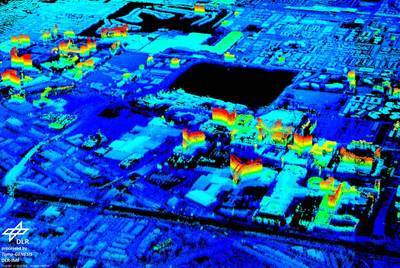
World record in information retrieval from satellite data
"Three million measurement points in one square kilometer: Prof. Xiaoxiang Zhu and her team have set a world record in information retrieval from satellite data. Thanks to new algorithms, the researchers from the Technical University of Munich (TUM) succeeded in making four-dimensional point clouds of Berlin, Las Vegas, Paris and Washington, D.C. from images stacks of the TerraSAR-X radar satellite. Next the scientists plan to create four-dimensional models of all cities in the world. The world's major cities are growing. According to United Nations estimates, today approximately half of the world's population is already living in cities. By 2050 the figure is expected to grow to two thirds of the world´s population. "This growth places high demands on building and infrastructure safety, since damage events can endanger thousands of human lives at once," says Xiaoxiang Zhu, Professor for Signal Processing in Earth Observation at TUM. Together with her team she has developed a method for early detection of potential dangers: for example, subterranean subsidence can result in the collapse of buildings, bridges, tunnels or dams. The new method makes it possible to detect and visualize changes as small as one millimeter per year." [...]
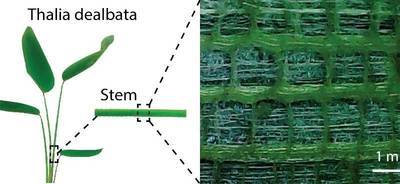
Plant inspiration could lead to flexible electronics
"Versatile, light-weight materials that are both strong and resilient are crucial for the development of flexible electronics, such as bendable tablets and wearable sensors. Aerogels are good candidates for such applications, but until now, it’s been difficult to make them with both properties. Now, researchers report in ACS Nano that mimicking the structure of the “powdery alligator-flag” plant has enabled them to make a graphene-based aerogel that meets these needs. Aerogels are light, porous materials that are already used in many applications, such as pollution control and insulation. To create a better aerogel for potential incorporation into bendable electronics, Bai and colleagues took inspiration from the stem structure of the powdery alligator-flag plant (Thalia dealbata), a strong, lean plant capable of withstanding harsh winds. The team used a bidirectional freezing technique that they previously developed to assemble a new type of biomimetic graphene aerogel that had an architecture like that of the plant’s stem. When tested, the material supported 6,000 times its own weight and maintained its strength after intensive compression trials and was resilient. They also put the aerogel in a circuit with an LED and found it could potentially work as a component of a flexible device. The researchers say that the approach could help them improve other types of materials in the future. The authors acknowledge funding from the National Natural Science Foundation of China and the 1000 Youth Talents Plan of China." [...]

Origami anything
"In a 1999 paper, Erik Demaine — now an MIT professor of electrical engineering and computer science, but then an 18-year-old PhD student at the University of Waterloo, in Canada — described an algorithm that could determine how to fold a piece of paper into any conceivable 3-D shape. It was a milestone paper in the field of computational origami, but the algorithm didn’t yield very practical folding patterns. Essentially, it took a very long strip of paper and wound it into the desired shape. The resulting structures tended to have lots of seams where the strip doubled back on itself, so they weren’t very sturdy. At the Symposium on Computational Geometry in July, Demaine and Tomohiro Tachi of the University of Tokyo will announce the completion of a quest that began with that 1999 paper: a universal algorithm for folding origami shapes that guarantees a minimum number of seams." [...]
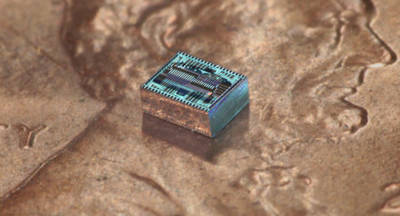
Ultra-Thin Camera Creates Images Without Lenses
"Traditional cameras—even those on the thinnest of cell phones—cannot be truly flat due to their optics: lenses that require a certain shape and size in order to function. At Caltech, engineers have developed a new camera design that replaces the lenses with an ultra-thin optical phased array (OPA). The OPA does computationally what lenses do using large pieces of glass: it manipulates incoming light to capture an image. Lenses have a curve that bends the path of incoming light and focuses it onto a piece of film or, in the case of digital cameras, an image sensor. The OPA has a large array of light receivers, each of which can individually add a tightly controlled time delay (or phase shift) to the light it receives, enabling the camera to selectively look in different directions and focus on different things. "Here, like most other things in life, timing is everything. With our new system, you can selectively look in a desired direction and at a very small part of the picture in front of you at any given time, by controlling the timing with femto-second—quadrillionth of a second—precision," says Ali Hajimiri, Bren Professor of Electrical Engineering and Medical Engineering in the Division of Engineering and Applied Science at Caltech, and the principal investigator of a paper describing the new camera. The paper was presented at the Optical Society of America's (OSA) Conference on Lasers and Electro-Optics (CLEO) and published online by the OSA in the OSA Technical Digest in March 2017." [...]
Modelos 3D
Com a disponibilidade de ferramentas que permitem dar azo a nossa imaginação na criação de peças 3D e espaços como o thingiverse para as publicar, esta rubrica apresenta alguns modelos selecionados que poderão ser úteis.

Parametric Music Box
"This is a 100% printed customizable music box! Only 3D printed parts are used in the design and it can be assembled and disassembled via printed snapping mechanisms. The project originated when a friend of mine said that he'd only be interested in 3D printing once he can print a music box ;)" [...]
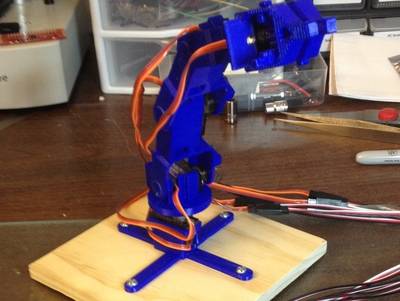
OpenScad Micro Servo Robot Arm Remix using MG90 Servo's
"My MG90s servos are 3mm taller than SG90's so I hacked the scad file to accommodate the taller servo's. Update: Added zip file with component parts converted to STEP format for SolidWorks using FreeCad. The Gripper Gear would not import so it's not included." [...]
Projetos Maker
Diversos Projetos interessantes.

Arduino Memory Game
"This project uses an Arduino Mega control unit, Arduino 3x4 keypad, battery mini display and 7 segment display. The numbers are random appear on the display and the player must enter a specific combination of numbers. When a player enters a good set of numbers on the battery display is increased one level." [...]
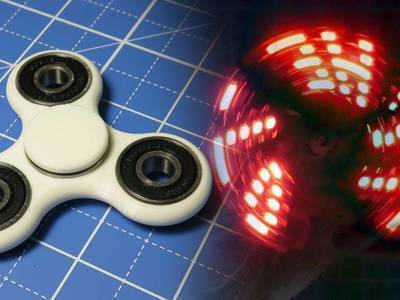
DIY Fidget LED Display
"Fidget spinners...the fast spinning toy that came out of nowhere. It's a simple design that's a lot of fun to play with. I decided that I wanted to make my own, but as with everything I make, I wanted to add some flare to it. The idea is to add LED's to it to create a Persistance of Vision (POV) display. It's basically a set of LED's that blink on and off really fast and whenever you move them back and forth really really fast, the LED's display a text or message. That's the idea, now let's see if we can do it." [...]
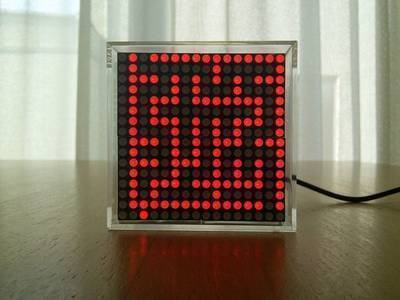
How to Make a MAZE GENERATOR Using ATtiny13a
"I made devices using ATtiny 13a to display infinite maze creation and escape routes. In this maze, a maze is generated in 1 KB flash memory using an algorithm called "Bo-taoshi" in Japan. In addition, we show the escape route using an algorithm that blocks roads surrounded by walls on all three sides. Moving dots indicate the time to display escape route. When the dot reaches from the upper left to the lower right, escape route is displayed so please escape from the maze by then." [...]
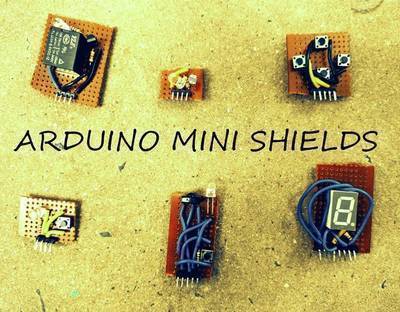
Arduino Mini Shields Construction
"Presented Here are the Arduino Mini Shields. These Shields are very easy and fun to make. Arduino shields are very useful for the Arduino to help you out in some very common projects like IR Communication, Relay Controlling, etc. This shields are also portable. You can also make your own custom Mini Arduino Shields. It is a Great IOT Project to make. In this project, I experienced that Each Shield is like a mini electronic Project. And I think it would be nice project for Beginners in Arduino. I first of all Made the Relay Shield. I started making week ago and one by one I completed all six of them. Now, I have presented here Six Arduino Shields." [...]
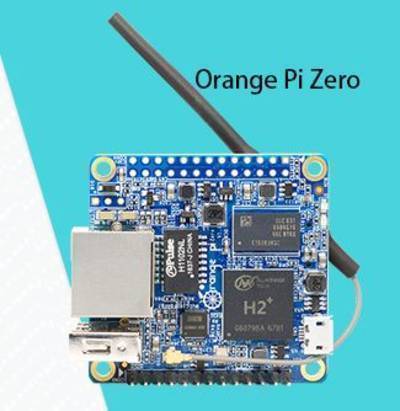
Logging CPU Temperature and Uptime of an OrangePi Zero
"The OrangePi Zero is a small PC, similar to a Raspberry Pi Zero, which is manufactured in China. I bought it for $6.99 + postage from China - see http://www.orangepi.org/orangepizero/ .The reason I bought it is that I have an IOT Cloud setup and I capture a lot of sensor data. I wanted to see if the device could meet the following criteria." [...]
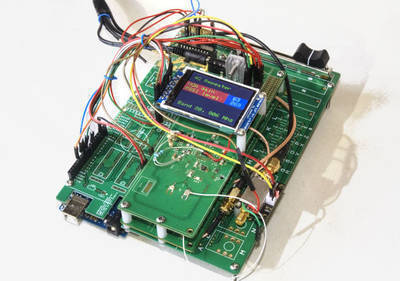
Arduino Cell Phone 4G Signal Booster / Repeater
"Living on an island in the middle of nowhere, mobile/cell phone reception can be rather intermittent and it seems that there is currently no reliable open source gadget that could help me solve this problem on my kind of budget. I do have the option of using 'cable phone' but being of a general 'Pirate' disposition I thought it would be a better idea to do all my phone calls, emails and data transactions by cell phone and save a whole bunch of dollars by not having to pay for land based line rental and broadband etc. Doing everything through my phone is a lot cheaper and still plenty quick enough to watch films and videos without any buffering. I actually tried buying an off the shelf repeater but it completely jammed my phone up and I started to get worried that it was going to damage it, so instead I opened it up to see how it worked - maybe I could repair it? Unfortunately none of the components could be identified and furthermore, it looked like it had been severely 'messed about with' at the factory. The soldering looked very poor and a large piece of metal swarf fell out of the opened case :(" [...]
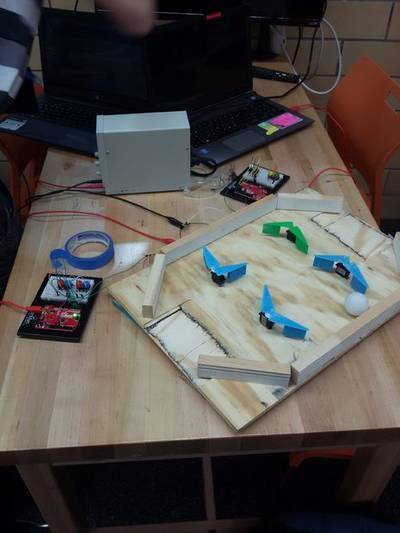
Arduino Servo Foosball
"Our objective: To create a Foosball like game using Arduinos, servos and its arms, and wooden pieces. Why: We decided that this project would give us the chance create something interesting and usable while allowing us to work with a broad range of topics, such as, wood working, coding the Arduinos, 3-D printing, and wiring." [...]
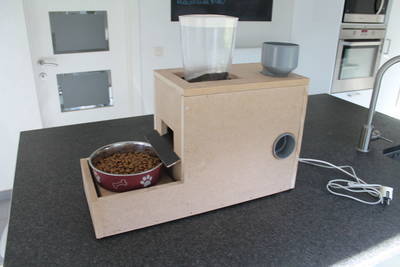
Automatic Dog Feeder
"To make my life a bit easier and also mentally train my dog i came up with an idea to make an automatic dog feeder. By using this machine you can feed your dog via website, either manualy or at specified times. The dog can also earn food by dropping a ball into tube. On the wesbite you can see how much you dog has eaten today and the days before or how much food is in the reservoir. You also can set maxium portionsize so you're dog doesn't get overfed and set specified times when you're dog shouuld get food. This way you can mentaly train your dog and make sure you never forget to feed him." [...]
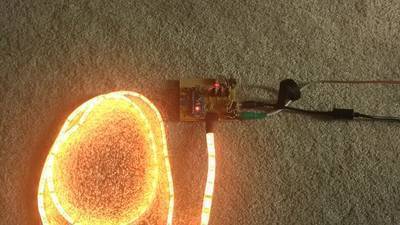
Arduino Color Organ
"For a long time now I have been searching for a way to make a simple, relatively cheap color organ. For those of you who are not familiar with the term, a color organ displays lights in sync with the music. After lots of testing, researching and creating circuits, I have come across what I have found to be a fantastic way to achieve this goal. In addition to lighting with the music, I added a second mode for the lights to fade in and out of all the colors to add a second use for it." [...]
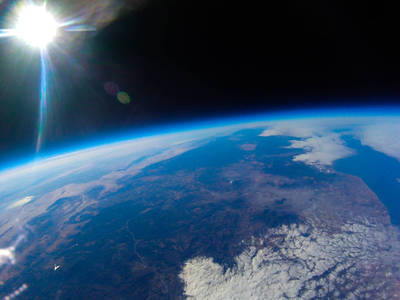
The Ultimate High Altitude Weather Balloon Data Logger
"Record high altitude weather balloon data with the ultimate high altitude weather balloon data logger. A high altitude weather balloon, also known as a high altitude balloon or hab is a huge balloon filled with helium. These balloons are a platform. Allowing experiments, data collectors, anything to go to near space. Balloons frequently reach heights of 80,000 feet with some going over 100,000 feet. A hab typically has a payload containing a parachute, radar reflector, and a package. The package typically contains a camera and a gps unit used to track and recover the balloon. As the balloon gains altitude, the pressure drops. With less pressure against the balloon, the balloon expands, eventually becoming so large, it pops! The parachute then returns the payload back to the ground, often many miles from where the balloon was launched. My school uses these balloons regularly to capture video of the curvature of the earth. I noticed no data was being collected on these flights. With extreme temperature and pressure changes, large amounts of radiation, and wind speed, lots of interesting data can be captured from these flights. This project began four years ago with a socratic seminar about space. The seminar acted as inspiration. My peers decided they wanted to reach space. Touch the untouchable. They decided the way to reach space would be with weather balloons. Skip ahead four years later and we have launched 16 balloons. 15 have been recovered which is a very impressive track record for weather balloon retrievals. This year, I started high school and joined the weather balloon launching team. When I realized no data was being recorded, I set out to change that. My first data logger was The Easiest Arduino High Altitude Balloon Data Logger. This new version captures more data, earning it the title of ultimate. With this, altitude, temperature, wind speeds, ascent and descent rates, latitude, longitude, time, and date is captured and stored on a microSD card. This version also uses perf board to increase durability and lower risk. The design is made so that an Arduino Nano can be plugged in on top. The data collected from this data logger allows us, students to touch the edge of space. We can touch the untouchable!" [...]
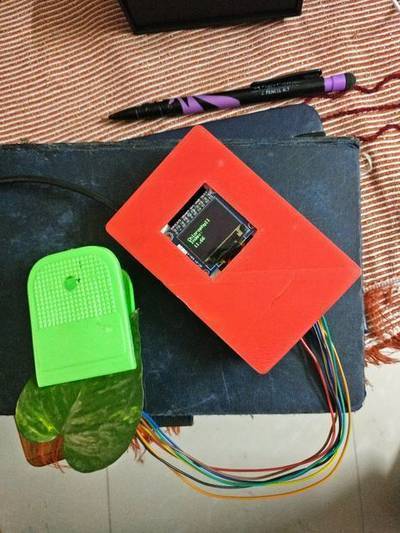
FarmCorder - Crop Nutrition Deficiency Sensor
"Farming remains to be backbone of developing countries like India and Africa and it is the principal source of livelihood for majority of the population in the countries. Farmers however, use antiquated techniques which lead to overuse or under usage of fertilizer,water which leads to disastrous yields. Our solution to this problem is “FarmCorder” system. We propose a new simple and intuitive sensor based system which consists of base hand held module. The leaf nutrients are measured by leaf probe which works by multi-spectral spectroscopy. The soil moisture probe which works by capacitive moisture sensing. The data logging is performed by a low power micro-controller and data is sent to a remote server with GPS coordinates via a GSM module where the data is processed and appropriate fertilizer advice is provided. It was late summer in my hometown and I visited my dad's village farm during my university break, I found my dad to be perplexed in the field jotting down something on his notebook. Upon inquiry I learned that it was time for fertilizer application in his rice crop and that he was finding it difficult to find out how much fertilizer to apply for his crop. I had heard of the recent surge in fertilizer cost but I was surprised to hear that it was causing him quite a bit of capital investment and that the amount had to spot on. I found the problem to be a bit odd and I wondered if anyone had come up with a solution to solve this rather giant problem. A visit to a nearby Agriculture research facility made me realize the magnitude of the problem and the wide array of farmers whose very livelihood was affected by the same.This sort of inspired me to come up with a solution to make not only my dad's job easy but also aid all small farmers in developing nations." [...]
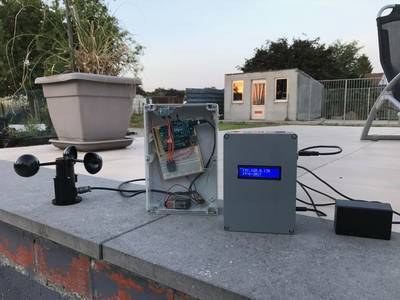
Pi Weather Station Project 1
"In this project, we will be making a weather station that measures temperature, humidity, pressure and windspeed and transmits them wirelessly to a station running on Raspberry Pi, wich displays the IP address and the current date. The readings of the weather station are available by accessing the Raspberry Pi's IP address." [...]

Automated Garden Monitoring System - Slimme Serre
"As a student, I have a habit of forgetting things. Because of that, I'm unable to plant any plants,vegetables or herbs. But now with the help of The Slimme Serre, this is no longer a problem. The Slimme Serre is an automated gardening monitoring system that sends the data of the sensors that are in the device, to a webserver. So that the user can monitor their plants on a website. With The Slimme Serre it is possible to monitor your plants, all while being in the comfort of your own couch. This concept is being developed as a final project within the first year of multimedia and communication technology, at Howest Kortrijk, Belgium." [...]
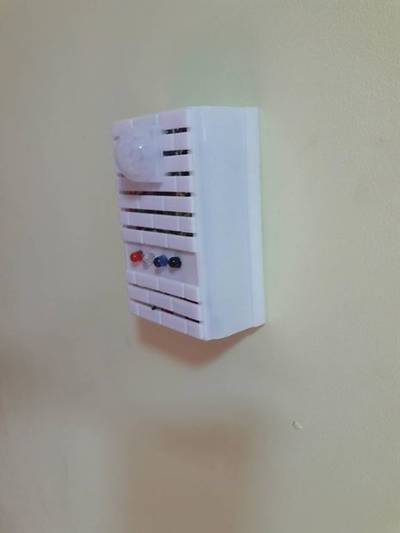
Wirless Alarm and Remote Based Nodemcu and TelegramBot
"This project used for saves shops from theft and fire and some places in combines as server room or electricity room that no entry from everyone. this device monitor temperature and fire flame and motion and will send alarm for user. the alarm and control commands send through telegram application. we can control by add shield of relay for device." [...]
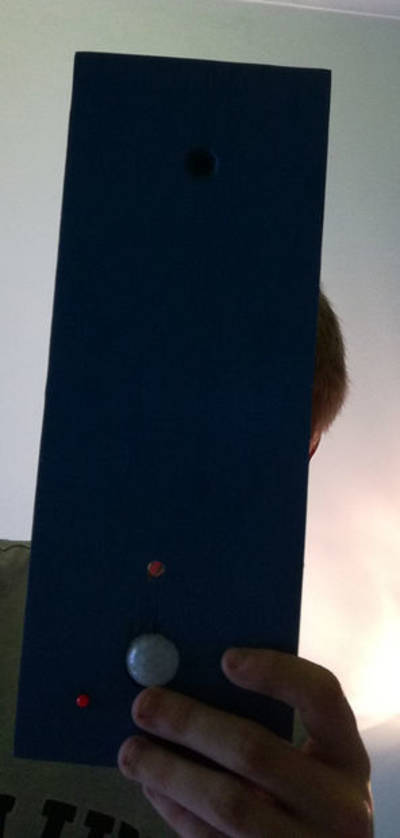
IoT Doorbell With Built-in IR Camera (Python, Flask, Raspberry Pi)
"For school related purposes, I have been working on an IoT doorbell that takes pictures/records video of people who come stand near your front door. It has been a fun little project albeit not completely finished, this instructable will teach you how to set up to the point I've reached given the time limit." [...]

Arduino Commute Checker
"In this Instructable I'll show you how to make an Arduino Commute Checker, a device that uses a ESP8266 to check the fastest way to get home from work! It will light up the fastest route taking into consideration traffic conditions using my Arduino Google Maps library." [...]
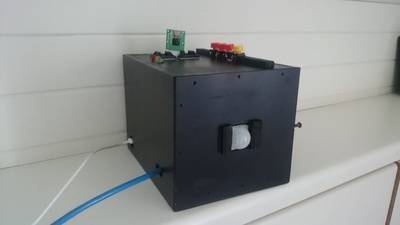
RPI Safety Camera With Motion Detection
"This instructable will help you build a safety camera that takes pictures when a motion is detected. To turn the camera on and off you have to enter the code (using 4 simple buttons). I also made a website with its associated database to view your pictures easily. You can also add more than 1 camera this way, and more than 1 user. If you don't want this you can skip step 3, and the website part of step 4." [...]
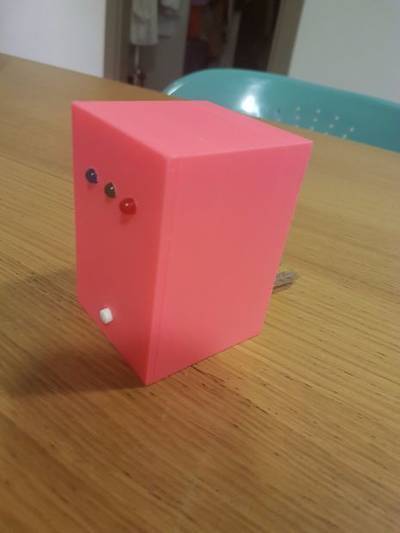
Plant Feelings
"Don't know if your plant needs water? This little tool will help you know if your plant wants water or not. When you stick the sensor into the soil the leds will show you if it needs water, if it sas enough or if it has too much." [...]

Complete Raspberry Pi Weather Station
"This is my very first Instructable! In this tutorial I will guide you to make a Raspberry Pi weather station with its own database and website. I made this weather station in context of a school assignment, I got my inspiration on Instructables. The weather station can measure temperature, humidity, barometric pressure, wind speed and light level in percentage. All the samples that the Raspberry Pi gathers will be stocked inside a MySQL server on the Pi itself and will be displayed on a webserver!" [...]
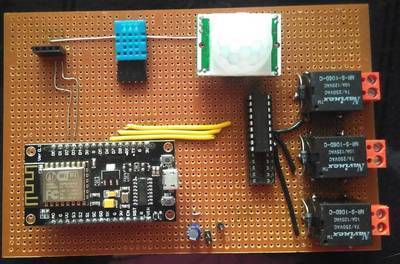
Simple Home Automation With Blynk
"A simple home automation project allows you to control home appliance from anywhere. Blynk provides very good and attractive interface. In this project we are going to build simple home automation system in which we can control three relay from blynk app, also we can monitor temperature, humidity and motion over blynk app. In this toturial I will show you how we can build this system." [...]
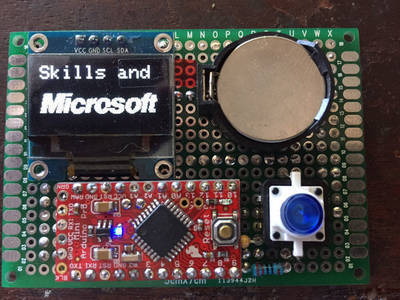
Build a Digital Interactive Electronic Business Card
"Build a Digital Interactive Electronic Business Card. Make yourself stand out with a Digital Interactive Electronic Business Card." [...]

NFU Dream Maker Project: Spherical Robot Base
"In this project 3D printing is used to create a spherical robot base. We will also show you how to integrate Arduino Nano with Bluetooth module that control a spherical robot through commands from a Android phone." [...]
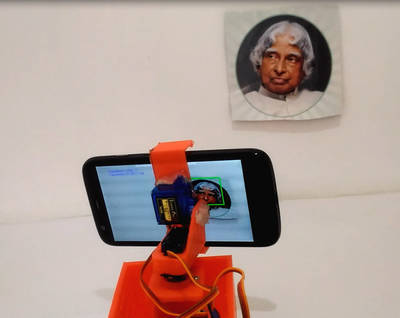
Real Time Face Detection and Tracking Robot using Arduino
"Ever wanted to build a Face Tracking Robotic Arm or Robot by simply using Arduino and not any other programming like OpenCV, visual basics C# etc? Then read along, in this project we are going to implement face detection by blending in the power of Arduino and Android. In this project, the mobile camera will move along with your face with the help of servos. The advantage of using the Android Mobile Phone here is that you do not need to invest on a camera module and the whole image detection work can be done in the phone itself, you do not need your Arduino connected to your computer for this to work. Here we have used Bluetooth Module with Arduino to communicate with Mobile wirelessly. The Android application used in this project was created using Processing Android, you can either directly install the application by downloading the APK file (read further for link) or put on your programming cap and make your own more appealing Android Application using the Processing Code given further in the Tutorial. Learn more about Processing by checking our previous Processing Projects. By the end of this tutorial you will have a Mini Tilt and Span Robotic Arm that could track your face and move along with it. You can use this (with further advancement) to record your vlog videos or even take a selfie with the rear camera of your mobile phone since it positions your face exactly at the centre of your mobile screen. So!! Sounds interesting? Check the Demo Video at the end this tutorial to see it working. Let’s see how we can build one... I have tried my best to make this project to work as simple as possible, anyone with minimum knowledge on hardware or coding can use this guidelines to make this project work in no time. However once you make it I suggest you to get behind the codes so that you can really know what makes this thing work and how. " [...]

Persistence of Vision Arduino Code Generator
"With this tutorial and free apps you could load any image or text in your arduino persistence of vision device (also ther is instructions for simple hardware)" [...]

Controlling RC Car Via a Web Interface
"Hii friends, In this instructable I'm going to teach you to make an RC Car via a web interface. We'll control it wirelessly through a server of our own. Using the method that I'll be showing you, we won't need to use an RC receiver. To host the web server all we going to use a Raspberry Pi and an Arduino to interface the Rasberry Pi with the RC cars motor controller. Well, wait there's an another step for the list of materials which we're going to use in this instructable and don't forget to vote me Plzzzz:-)." [...]
MyLight-Clock with NeoPixel Ring 12 Controlled by Photon
"Read the time at night? Without glasses? Impossible? Focus on 2 light points, which will tell you the hour and the minute. Sleeping drunk with drowsy eyes, reading the time on the clock becomes difficult. Glasses not handy or slightly drunk from the last party? There is an Adafruit NeoPixel Ring with 12 LEDs which can be individually controlled. By symbolizing the hour as a red LED and the grouping of the minutes into a 5 minute range as a blue LED, you can estimate with only one NeoPixel Ring how much time you can spend in the bed until the alarm rings (this can be retrofitted with a buzzer)." [...]
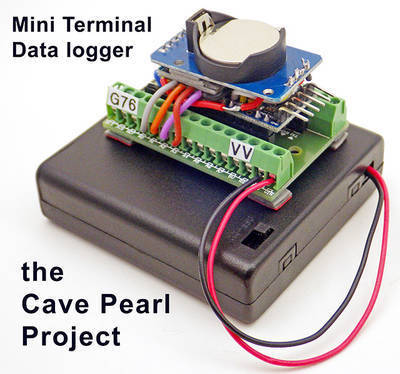
Arduino Data Logger: 2017 Build Update
"If you need a logger with a rugged waterproof housing, it’s still hard to beat the Dupont-jumper build released in 2016. However sometimes I just want a quick bare-bones unit for bookshelf test runs while I shake down a new sensor. I can whip up a breadboard combo in about twenty minutes, but they stop working if I bump one of the wires loose. I’ve lost SD cards from this half way through a long term test, and I’ve also run into issues with noise & resistance from those tiny breadboard contacts. To address this I’ve come up with a new configuration that uses a screw-terminal expansion shield originally intended for the Arduino Nano. This requires a modest bit of soldering, and after some practice, between 1-1.5 hours to finish depending on how many “extras” you embed into the basic three component core. In return for that time you get all the pins broken out, making this approach almost as flexible as a breadboard, and much more physically robust. Pop them into some pre-made boxes and these little guys qualify as deployable, at least for gentle environments." [...]
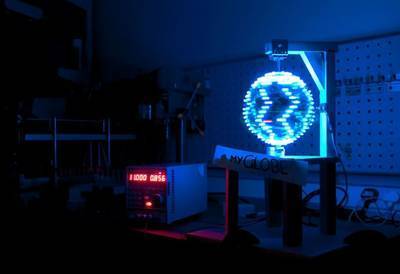
MyGlobe: Drawing 3D Images in Thin Air
"Exploiting the persistence of vision quirk of the human eye, the myGlobe project uses a single strip of 25 LEDs to produce a glowing orb of light that can display any image. To achieve this, we spin the myRIO controller and circuitry at 1,200 revolutions per minute, whilst simultaneously blinking the individual LEDs at 2,200 Hz. This dazzling electronic artwork would look great in any living room or exhibition hall. To be able to draw 3D images in thin air, myGlobe leverages the persistence of vision quirk of human vision. When the human eye is subjected to multiple images in fast succession it cannot differentiate between them and so they merge into one continuous image. The human eye registers any discrete sequences that happen faster than 20 Hz as a continuous image. For myGlobe, I'm rotating a curved array of LEDs (along with the myRIO controller and associated circuitry) around an axis-point, with the help of a small motor. The LEDs array flashes with different patterns in quick succession, which fools your eye into seeing a continuous image. For example, I have used myGlobe to display a world map, funky patterns and many emojis. But, of course, you can easily add other designs to your liking. Additionally, if you are a better artist than me, you could easily create a series of images, which the myRIO can cycle-through to create glowing, 3D animations!" [...]
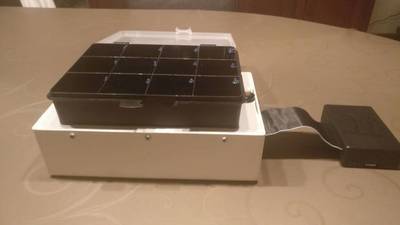
Automatic Pill Dispenser
"Hi, in this instructable i will help you make a pill case that lets the user know when they have to take a pill and what pill they have to take. This case will come with a piezzobuzzer that alerts the person when it is time to take a pill and 12 leds that are placed in 12 slots that can all hold a different pill. The pill case will be connected to a raspberry pi. The raspberry pi will host a website which is connected to a database. Here you can setup which pills you want to put in the box and when you have to take them." [...]
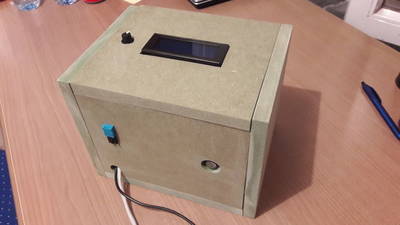
Air Quality Meter
"The meter calculates the temperture, humidity and carbon dioxide en shows the result on a small display. It also collects the data en sends it to a database. I also created a small website which displays all this data in graphs. The database is made in MySQL, the website is written in Flask, and the hardware is attached to a raspberry PI. All my code is also uploaded to my raspberry PI. In this tutorial I will show you how to create an Air Quality Meter for your own." [...]

Simple & Easy to Make Vu Meter or Audio Meter Using LM3915
"In this tutorial i will show you how to make a simple & easy Vu Meter or Audio Meter using LM3915." [...]
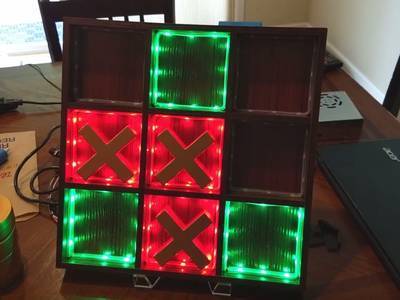
Tic-Tac-Toe with Teensy
"Play tic-tac-toe against the Teensy with a physical board and playing pieces." [...]
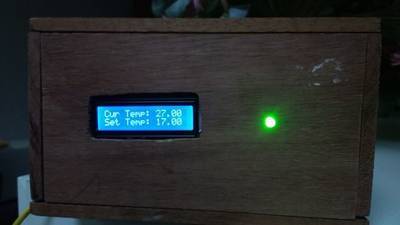
Beer Fermentation Temperature Controller
"As a homebrewer the idea of a controlled fermentation isn't new to me, there are many products out there that do this type of thing. The problem with most of the products, in my opinion, is their sometimes insane price tag or lack of features. So i set out to make a DIY version that satisfies most of my needs with materials I already had. This prototypes isn't by any means perfect and will definitely improve in the future." [...]
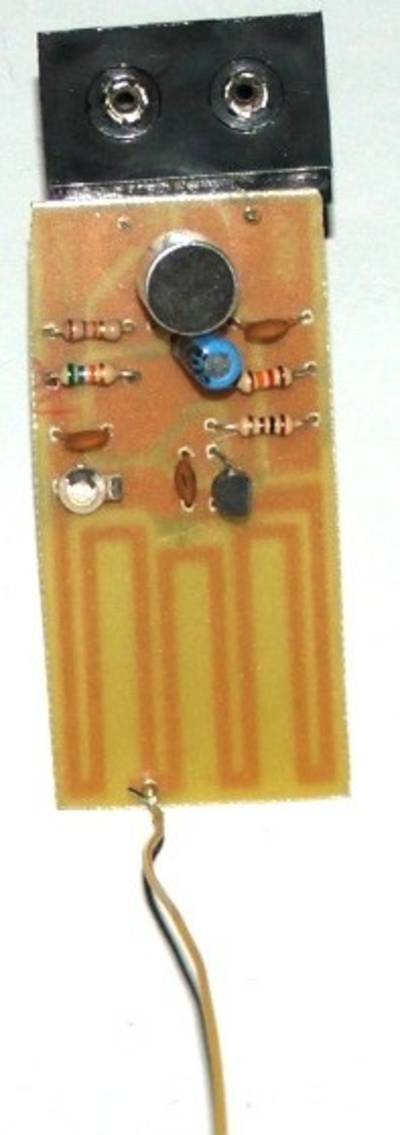
One Transistor FM Transmitter
"This circuit is basically an oscillator which runs at around 100 MHz. The most important parts of the oscillator are the transistor Q1 and the tuned circuit, which comprises the inductor Ll and the variable capacitor CV1. When the battery is first connected, a brief surge of current flows from the collector to the emitter of Q1, causing an oscillating (i.e: alternating) current to flow back and forth between Ll and CV1. An oscillating voltage therefore appears at the junction of Ll and CV1. The frequency of the oscillation depends on the values of Ll and CV1, so that varying the value of CV1 tunes the oscillations to the exact frequency required." [...]
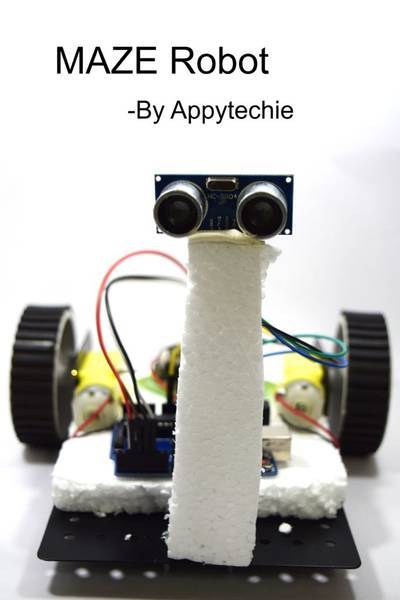
MAZE Robot With Arduino
"Hey, guys!! I'm Sridhar Janardhan back another instructable this time in the category of robotics.Amazing isn't it??So the robot which we are going to design is MAZE robot or obstacle avoiding robot this can be used as a surveilance system in your domestic place or just for a fun activity to learn the basics of robotics.So let's get started in constructing it." [...]

Paper Piano
""PaperPiano" is a pentatonic scale piano made out of paper and powered with an Arduino and some code! It's a part of a series of STEM education activities, whose goal is to teach different science and engineering concepts using building, crafts, and art as an entry point. This was made at Princeton University under The Council on Science and Technology. Contributors include Aatish Bhatia, Bernat Guillen Pegueroles, and Sharon Lee De La Cruz." [...]

IoT Based Smart Farming Stick Using Arduino and Cloud Computing
"Smart farming based agriculture IoT stick is regarded as IoT gadget focusing on live monitoring of environmental data in terms of temperature, moisture and other types depending on sensors integrated with it. Agricultural IoT stick provides the concept of "plug & sense" in which farmers can directly implement smart farming by as such putting the stick on the field and getting live data feeds on various devices like smartphones, tablets etc. and data generated via sensors can be easily shared anywhere and viewed by agriculture consultants remotely via cloud computing technology." [...]
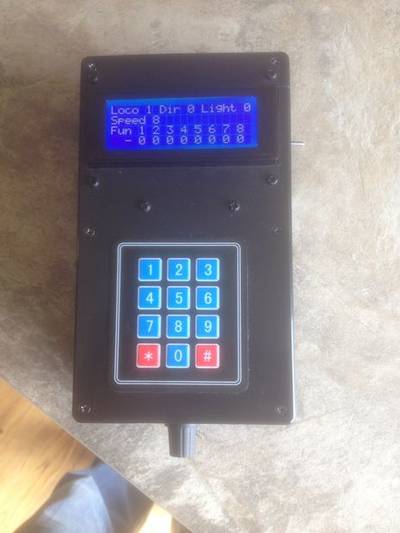
Garden Train - Arduino Wireless NMRA DCC
"Further to previous instructable with DCC on dead rail system, I have developed the idea further with a hand held DCC Command Station with keypad and LCD display. The Command Station contains all the coding required for NMRA DCC instructions, however instead of connecting to the rails, the data is transferred by radio module RF24L01+ to a receiver mounted in a truck or under the loco - wherever room permits." [...]
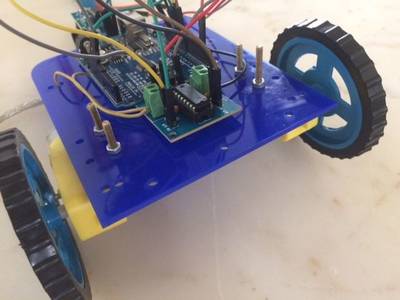
Object Detecting Robot
"Hey guys, this is my first robot i made using the arduino. This robot detects whether there is an object or not and if there is it will start moving. If there is no object then the robot will not move. I made this myself and i hope you guys will like it." [...]

Build an EMG Audio Amplifier! (Electromyography)
"Whenever your body needs to make a movement, the nervous system sends out tiny electrical signals that control your muscles. The technique of electromyography (EMG) allows us to amplify and measure these electrical signals. In addition to being a useful clinical tool for diagnosing various neurological disorders, EMG recordings can be used for engineering projects such as controlling prosthetic devices or playing music. If you've watched the White Rabbit Project, you know that EMG signals can even be used to control someone else's arm! This Instructable will walk you through the process of building an EMG amplifier that allows you to translate the tiny electrical signals produced by motoneurons into an audio signal played through speakers. These instructions are for making a two channel amplifier (i.e. listen to the activity of two muscles at once), but it's simple to make a single channel amplifier to save time and/or parts. Let's get started!" [...]

Self Watering Planter
"For a while i have been searching for a good design that no only keeps the plant watered but can also regulate the amount of water the plants would be receiving. This however did not turn out so great, either the plant was watered without limit using physics or it was watered with a sloppy mechanic that could potentially make a mess! This is why I decided to design a planter that fixed both of those problems, and i did." [...]
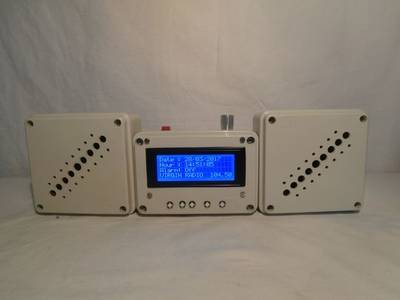
ArduRadio AlarmClock
"This is the evolution of the " DIY Alarm Clock " (https://www.instructables.com/id/DIY-Alarm-Clock) with the addition of the radio (TEA 5767). Navigating the Web I found a beautiful project of an FM radio with Arduino (https://www.instructables.com/id/Make-an-Arduino-FM-Radio-using-TEA5767/#CLPEZERIX0PVJW6), and since I like music I decided to update my "Alarm Clock"." [...]
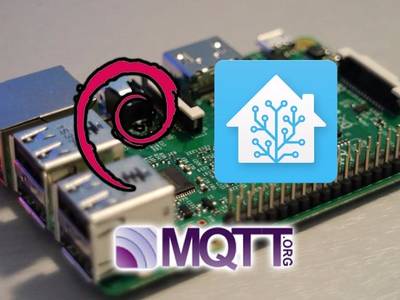
Creating an IoT Server with Home Assistant and MQTT
"Home Assistant is one of the most versatile and powerful home automation platforms and it is complacently open source. Once set up, it can be accessed from any web browser and allows your to create complex automation that put services like IFTTT to shame. One of the things that I like most about Home Assistant is that it all works on my local network. No more remote APIs or giving your data to other people all while slowing down your internet. You control your data including what stays local and what can be accessed remotely. This entire system can be run on a Raspberry Pi meaning that your personal smart home’s brain will run you about $35. The following guid will walk you through the basic steps involved with setting up your own Home Assistant server with MQTT support." [...]
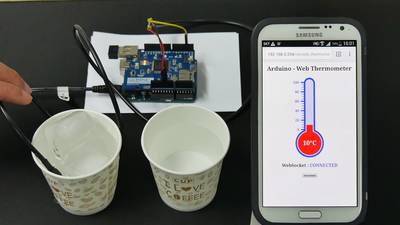
Arduino - Web-Based Thermometer
"This project allows you to check temperature at home from anywhere using web browser." [...]
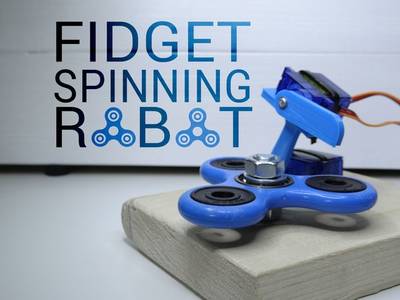
Fidget Spinning Robot
"Everyone know what is a fidget spinner. A lot of you might have one. I also have one and I spined for some time. But now I get bored of it and I thought that I can make a robot that will spin it for me. You can ask why? Because I can, spinners are very popular right now and I was really suprised that nobody made a fidget spinner robot. I wanted to make it a little bit like Simone Giertz so it should be more funny than usefull and I hope it is. If you also want to have a robot that will spin a spinner for you follow me!" [...]
That's all Folks!


